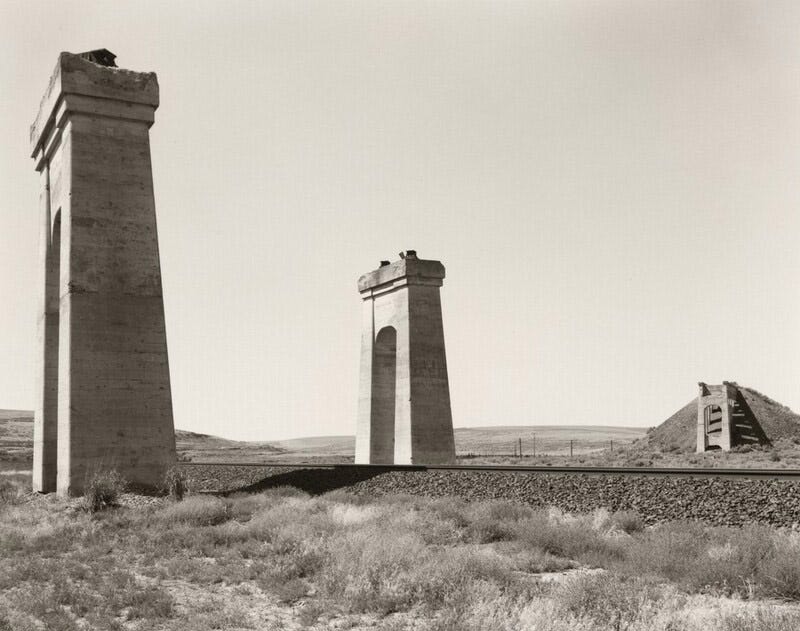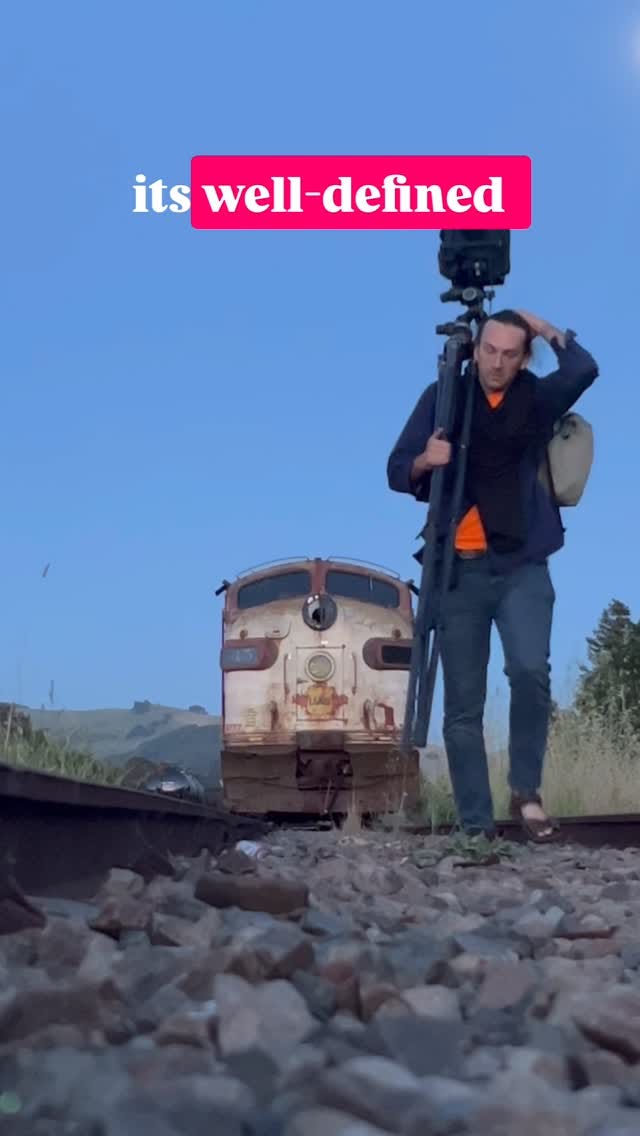Entry #25 from The Work
Milwaukee Road Ruins, Lind, Washington, John Sanderson (2025)
The good artist is a contestant in a metaphorical battlefield containing other artists of the past and present. He is well aware of his opponents. In studying their successes and failures, he alone understands how to use his Art to achieve aesthetic merit for himself, but to win over the fickle and flighty crowd is different. They demand immediate gratification, the kind of easily understood art that grabs one’s view at first, but fails to grow with meaning. He must not wield his Art to impress upon the worst among them, which is the majority, but the judicious minority who will see the artist’s nuance and studied restraint. Among their fellow contestants, the artist must be aware of each work produced such that he can attempt victory over his contemporaries by producing something finer, more to the point, and original. Ancient Greeks understood this battle for the foremost aesthete in their concept of agon — the struggle and clashing of ideas which alone broadens our understanding of beauty and our own humanity.
Chicago Milwaukee St. Paul and Pacific, Mark Ruwedel (2005)
This brings me to my photograph here of the “Pacific Coast Extension” of the Milwaukee Road. This stone bridge was built as part of a larger railroad route which stretched across the most rugged terrain in North America — the Pacific Northwest. Built with great ambition by a wealthy railroad in the early 1900s, it was all but abandoned and torn up in 1980 by a forsaken railroad. I learned about this location from the photograph made here by Mark Ruwadel (above). His view of the place caught my eye — but me being a devout skeptic on the matter of spatial interpretation, wondered if it could be seen a new way, and in way that fit into my world view. So when I set course to photograph the West Coast this year, I made it a point to visit this site. I sought to make my own “agonistic” version of the ruins in Lind, Washington for my Railroad Landscapes series. The scene actually differs from when the other photograph was made, as one of the abutments was removed closer to where I took the photograph. I realized this and adapted my angle to serve this opportunity. I sought to add an additional layer to the scene by looking through the hillside arch. If the abutment featured in Ruwedel’s picture had still been there, my view of the still-active railroad tracks below would have been blocked.
Thank you for reading and feel free to touch base with your own thoughts, opinions, or dreams.
John Sanderson
New York City
10/17/2025
Journal introduction from The Work
The American landscape in my time. Thousands upon thousands of miles traversed in search of pictures.
They become pictures when I see something.
Something which cannot be explained in words, only related to on some level of empathy.
Feeling with the light, subject or an arrangement of the two.
Driving, walking, searching deeper and longer for that which eludes me.
What I search for is unattainable.
But what keeps me coming back is the Quest, for those moments where a picture lines up with my imagination.
It is a complete circle.
"To strive, to seek, to find and not to yield." -Tennyson







Fascinating, John, especially in comparison to Ruwedel's photo which seems do different. I am curious to know if you did one more exposure there or if you felt strongly that this is the only angle of the view you wish to capture.